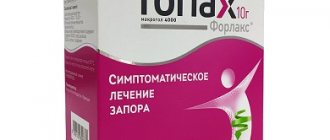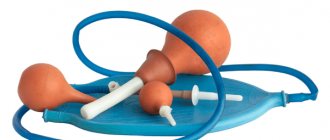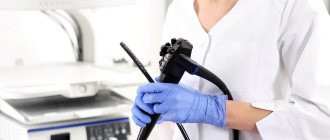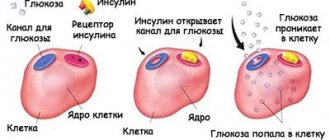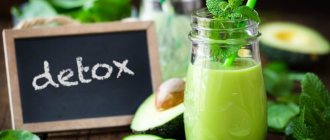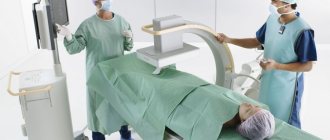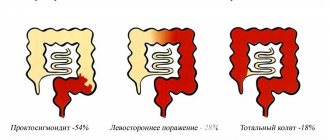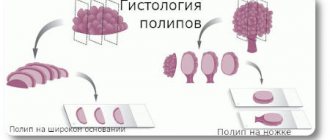In medicine, a syringe is understood as a special instrument used for pumping out or supplying various liquids, the functions of which include douching, that is, irrigating with medicine or washing the vagina, washing, irrigating or douching of the rectum and colon, introducing medications into them, and rinsing the nasal passages.
If such an instrument is chosen incorrectly, it is of poor quality or is not of the type needed in a particular case, it may happen that the treatment will not be completed in full, the results will have to wait longer, or positive changes will not be achieved at all. That is why it is necessary to know what types of syringes exist and what each of them is intended for in medical practice. You should not use used devices of this type, since there are several purposes for their use, and it may not be possible to properly sterilize the device at home.
Contraindications
- gastrointestinal bleeding;
- intestinal obstruction;
- acute inflammatory processes of the colon, anus;
- the first days after surgery on the gastrointestinal tract;
- rectal prolapse;
- bleeding hemorrhoids;
- acute appendicitis;
- peritonitis;
- malignant neoplasms of the rectum;
- pathologies of the cardiovascular system.
The feasibility of the procedure is determined by the doctor.
Douching as a preventive measure
Douching can be done to prevent the risk of developing inflammatory processes. If necessary, the procedure is carried out within an hour after an important event, since in this case the effectiveness will be maximum.
You also need to know what douching can be used for preventive purposes. Two common drugs are usually used:
- Douching can be done with miramistin , which is sold ready for use. The drug successfully treats thrush. It is supposed to eliminate unwanted symptoms and bacteria.
- Douching can also be done with chlorhexidine. In this case, it is possible to contribute to the treatment of bacterial vaginosis and colpitis.
Both drugs are sold in special 100-ml bottles, which are equipped with pipettes. Both medications are ready for douching.
You need to understand that the prevention of sexually transmitted diseases still cannot be 100% effective, so it is advisable to consult a doctor.
Preparation for the event
Inventory
Before the procedure, prepare materials and instruments. Would need:
- oilcloth (approximately 150*100 cm);
- basin;
- napkin;
- balloon bulb (syringe);
- hydrogen peroxide 3% (if using a bulb with a hard tip);
- petrolatum;
- enema solution (prescribed by a doctor);
- sterile gloves.
For a cleansing enema, it is better to take a balloon bulb with a long tip (10–15 cm).
Since it is recommended to administer 1–1.5 liters of liquid for a complete bowel movement, it is better to take a syringe with a volume of 470 ml (for a salt, oil, emulsion enema, 100–200 ml is enough). Boil the pear for 10–15 minutes before use. If the tip is hard, remove it and soak it in a 3% hydrogen peroxide solution for 15 minutes. Then it is connected to the bulb.
Preparing your workspace
It is better to do the enema while lying on your side, and then remain in a lying position for at least 10 minutes. Therefore, you should prepare the place where the procedure will be performed.
An oilcloth is placed on the bed so that one end hangs from the bed (a basin is placed under it). The oilcloth is covered with a diaper.
Prepare an enema solution. Place it near the bed so that it is convenient to draw liquid into the syringe without changing position.
Price
The cost of syringes depends on the manufacturer and size. Approximate prices for products of different volumes and brands of Russian production are summarized in the table.
| Manufacturer/marking | Volume, ml | price, rub. |
| Medresponse/ “A No. 3” | 30 | 70-80 |
| Alpina Plast/ “A No. 3” | 27 | 90-110 |
| Alpina Plast/ “A No. 7” | 70 | 130-150 |
| Alpina Plast/ “A No. 11” | 230 | 160-210 |
| Alpina Plast/ “A No. 13” | 317 | 260-290 |
| TTK/ "A-1" | 35 | 190-200 |
| TTK/ "A-3" | 110 | 200-220 |
| TTK/ "A-6" | 200 | 230-250 |
| TTK/ "A-9" | 250 | 250-270 |
| TTK/ "A-12" | 300 | 280-300 |
| TTK/ "A-15" | 400 | 310-330 |
An inexpensive but effective device - a syringe can be useful for a young mother to relieve such conditions of the newborn as constipation, colic associated with poor gas discharge or a runny nose. The device can restore peace of mind to the child and his parents; it is one of the necessary attributes of a baby’s first aid kit.
Enema solutions
Various solutions are used for cleansing enemas. The liquid temperature should be 22–23 °C, or 36–38 °C. The cold solution enhances intestinal motility and is prescribed for atonic constipation. Warm – relaxes, relieves spasms. If it is necessary to cause severe intestinal irritation, it is recommended to use liquid cooled to 12–20 ° C.
Prescribed solution:
- saline;
- soda;
- herbal;
- oil;
- emulsion;
- potassium permanganate.
Even boiled water is used for enemas.
Which solution to choose depends on the disease and the purpose of the prescribed procedure.
Saline
Hypertensive enemas effectively cleanse the intestines. They help remove a larger volume of fluid, soften stool, stimulate the release of loose stools, and enhance intestinal motility. Apply:
- 10% sodium chloride solution (10 g of table salt per 100 g of water);
- 20–30% solution of magnesium sulfate;
- 20–30% sodium sulfate solution.
The procedure requires 100 ml of solution. It is heated to 37–38 °C. After administering the liquid, it is not recommended to stand up for 20–30 minutes.
It is contraindicated for ulcers, anal fissure, acute inflammation of the lower part of the large intestine, and edema.
Be sure to read:
Fiber in human nutrition: benefits, content in foods and dietary supplements
Soda
Soda solution is prescribed for increased acidity of stool. It helps relieve pain caused by irritation of the intestinal mucosa with liquid feces during diarrhea. It is believed to be effective in the treatment of helminth infections. Recommended for cleansing the intestines with acetonemia.
To prepare the solution you need:
- 1.5 liters of water;
- 50–60 g of soda.
Sodium bicarbonate is dissolved in warm water. To cleanse the intestines, 1–1.5 liters of liquid are administered. The solution temperature should be 37–38 °C.
Herbal
Herbal infusions are recommended for cleansing enemas. Prescribed:
- Melissa infusion. Crushed shoots (3 g) are poured with a glass of boiling water and left for 20–30 minutes. Strain thoroughly. A warm solution (37–38 °C) should be administered. This enema relieves spasms.
- A decoction of flaxseed (oats, barley) and mallow leaves. The collection (1 tbsp) is poured into 1 liter of water. Boil for 10 minutes, filter, add 1 tbsp. l. salt, 2 tbsp. l. oil (linseed, hemp). I use this enema as a laxative for chronic constipation.
- Chamomile decoction. Chamomile flowers (6 tablespoons) are poured into 0.5 liters of boiling water. Place in a water bath and boil for 15 minutes. Allow the broth to cool, filter, and squeeze out the remaining raw materials. Add boiled water to the resulting broth to a volume of 0.5 liters. Add 2 tbsp. l. honey. This solution not only cleanses the intestines, it is anti-inflammatory and antibacterial.
Read more: Using herbs to cleanse the intestines
Decoctions should be prepared in enamel containers. It is better to buy plant raw materials at a pharmacy or collect them yourself (away from railways, roads, and factories). It is strictly not recommended to buy herbs by hand, as they could have grown in contaminated areas and harmful substances have accumulated in them.
Herbal enema solutions should be used only as prescribed by a doctor and with extreme caution - they cause allergies.
Oil
Used to empty the lower part of the colon from feces and gases during spastic constipation, in the postoperative period, after childbirth. This is a long-acting enema. After it you should lie down for at least 8 hours. Therefore, it is better to put it before bed (the act of defecation should occur in 10–12 hours).
The oil has the following effects:
- Mechanical. The solution penetrates between the feces and the intestinal walls. The feces soften and are easily excreted.
- Chemical. The oil in the intestines is partially broken down and saponified. It relieves spasms and helps restore normal peristalsis.
To prepare the solution, take 100–200 ml of vegetable oil (linseed, hemp, sunflower, corn). It is heated to 36–38 °C.
An oil enema is prescribed for a gentle cleansing of the intestines, when it is undesirable to strain the muscles of the perineum, abdominal wall, or strain. Its contraindications are the same as for all types of enemas.
Emulsion
It is recommended for seriously ill patients. Prepare an emulsion enema as follows:
- Prepare 0.5 ml of chamomile infusion. Chamomile flowers (4 tbsp) are brewed in 0.5 liters of water. Strain, squeeze out the remaining residue, add water to a volume of 500 ml.
- Take 1 yolk. Beat thoroughly. Add 1 tsp. baking soda.
- The yolk is mixed with chamomile decoction. Add 2 tbsp. l. Vaseline oil or glycerin.
When using an emulsion enema, bowel movement occurs within half an hour.
Potassium permanganate solution
For an enema, use a slightly pink solution of potassium permanganate. 4–5 crystals of potassium permanganate are dissolved in 1.5 liters of water heated to 36–38 °C. A more concentrated solution, instead of benefit, will cause irreparable harm (burn of the mucous membrane).
Be sure to read:
Buckthorn-based laxatives: list of drugs and their use
An enema with potassium permanganate is prescribed for treatment:
- diarrhea;
- hemorrhoids (if there is no bleeding).
To cleanse the intestines, it is better to use other solutions, since potassium permanganate dries out the mucous membrane and causes additional irritation.
Description of compositions
The home method of cleansing using solutions should be selected in accordance with the doctor’s recommendations. Cleansing is carried out according to this recipe.
Salt and soda
The solution is made in the following proportion: 10 g table salt / 100 g water (10%). Use 20-30% solutions based on Mg and Na sulfate.
The water is heated to a maximum of 38 0C. After the procedure, it is recommended to lie down for half an hour. Contraindications: peptic ulcers, cracks, acute inflammatory reactions and swelling.
Soda solution is prescribed to relieve pain when stool has a high level of acid content. The proportion of the solution is 1.5 l. water / 50-60 g of soda at a temperature of 37-38 0C.
Herbal
Traditional medicine gives three ways to prepare herbal infusions. It is recommended to cook in enamel pans, prepare the collection yourself (away from the highways, railways) or buy it at a pharmacy. Be careful when using herbs - allergic reactions are possible!
Melissa infusion against spasms: 3 g of plant per glass of boiled water. Let it brew for half an hour. Temperature 37-38 0C.
Decoction of flaxseed (oats, barley) and mallow leaves: 1 tbsp. l. / 1 l. water, bring to a boil (10 minutes) and strain. Add ingredients: 1 tbsp. l. salt, 2 tbsp. l. oils Used for frequent constipation.
Chamomile decoction: 6 tbsp. l. / 0.5 l. boiling water, place in a water bath for 15 minutes. Strain and squeeze out the resulting raw materials. Add an additional 0.5 liters. and 2 tbsp. l. honey. An excellent remedy for combating inflammatory processes and harmful bacteria.
Oil
Used to achieve emptying of feces and gases in the large intestine. The enema used lasts for a long time. After the procedure, it is better to lie down for up to 8 hours. Therefore, cleanse before bed.
Oil affects the intestines mechanically (softening of stool) and chemically (breakdown of matter, appearance of soap). The substance is heated to the maximum limit in an amount of 100-200 ml.
An oil enema is recommended as a softening agent. There are general contraindications.
Emulsion
Composition of the solution: 0.5 ml of chamomile infusion, 1 yolk, 1 tsp. soda powder and 2 tbsp. l. Vaseline (glycerin). Emptying will occur in 30 minutes.
Potassium permanganate solution
Proportion: 1.5 l. water (36-38 0C) / 4-5 crystals of permanganate K. It is dangerous to use a highly concentrated solution. A remedy is prescribed to eliminate diarrhea and hemorrhoids (pay attention to the presence of bleeding). Potassium permanganate can dry out the intestinal mucosa and cause irritation.
How to carry out the procedure
An enema should be given only as prescribed by a doctor. The specialist will recommend which solution will be most effective, to what temperature it should be heated or cooled, and how much to administer.
Stages of the procedure:
- Wear sterile gloves.
- Lubricate the tip of the syringe and the anus with Vaseline.
- Lie on your left side, tuck your legs and bring them to your stomach. At the same time, manage to spread the buttocks with one hand, while holding a napkin near the anus, and insert the syringe with the other.
- The tip should enter the anus to a depth of 10–12 cm. Insert it carefully, using rotational movements.
- Slowly press on the balloon bulb and pour in its contents. You should not sharply squeeze the syringe, as strong pressure of liquid can damage the intestine. If you feel strong pressure or acute pain, stop the procedure immediately and seek medical help.
- The pear should be removed from the rectum carefully.
- Use a napkin to wipe the skin from the perineum to the anus.
- Close the buttocks tightly, carefully pull out the oilcloth with the diaper.
After administration, you should lie down on your left side for 10 minutes. Then roll over onto your right side. You should breathe with your stomach. This will help move water into the intestines. After an enema, you need to lie down for at least 20–30 minutes (except for an oil enema).
In case of anal fissure, the procedure must be carried out extremely carefully. An enema is given as many times a day as the urge to defecate occurs. The tip is inserted into the anus along the edge of the anus on the side opposite to the fissure.
Immediately after bowel movements, a bath with potassium permanganate is necessary. Then a suppository lubricated with novocaine, streptocide and zinc ointment is introduced.
To cleanse the intestines of toxins, the following scheme is recommended:
- Day 1 – before bedtime, 0.5 liters of liquid are administered;
- Day 2 – 1 liter of solution is administered;
- 4th day – 1.5 liters required;
- Day 7 – give a 2 liter enema.
On days 3.5 and 6 they take breaks. They are needed to prevent intestinal motility from being disrupted.
To administer large volumes of liquid, it is better to use an Esmarch mug, since the maximum volume of a syringe is about 0.5 liters. And administering an enema several times in a row will further irritate the intestines.
Preparatory stage
To administer an enema yourself, you should prepare the following materials:
- douching tool;
- liquid or solution in the required volume;
- Vaseline or baby cream;
- oilcloth.
The composition of the solution depends on what type of enema is used. Before the procedure, the bulb and tip must be washed well in a soapy solution. If you use plain water for douching, it should have a temperature of no more than 35 degrees. If glycerin or olive/sunflower oil is added to the water, then the proportion should be as follows: 1 tbsp. spoon for 0.5 liters of water.
https://youtube.com/watch?v=Jt7N9SBAvGc
Possible complications and consequences
The procedure is carried out very carefully, as prescribed by the doctor, otherwise, instead of recovery, you can do a lot of harm.
- You should not give an enema often. The intestines will be “offended” and will not want to cleanse themselves. Enemas and laxatives contribute to the development of “lazy bowel” - a pathology that occurs due to weakened intestinal motility.
- The procedure helps cleanse the intestines not only of feces and gases, but also of beneficial microflora. And it is necessary for complete digestion and absorption of food. It has been proven that beneficial microflora helps strengthen the immune system. And without it, pathogenic microorganisms will begin to multiply in the intestines.
- If you insert the syringe incorrectly, you can damage the intestine. At best, a small wound will appear on the mucous membrane, at worst, a rupture will occur, and the entire contents of the intestine will fall into the abdominal cavity. Peritonitis will develop. Urgent surgery will be required.
- If there is no bowel movement after a certain time, intoxication may occur. Since harmful substances will dissolve and begin to be absorbed.
- When a large amount of fluid is administered, especially with pathologies of smooth muscle tissue, stretching of the intestinal walls will occur. The pressure inside the lumen will increase. This will lead to additional irritation and exacerbation of the pathological process.
Be sure to read:
List of products that strengthen the chair
Therefore, before carrying out the procedure, compare the benefits and harms of an enema.
Why is douching recommended?
Many women are interested in why douching. In fact, many factors indicate a high level of effectiveness of the procedure.
- Antimicrobial irrigations can be performed before gynecological operations. Also, after surgery, douching can speed up recovery, but the procedure can only be performed after prior consultation with a doctor.
- It is assumed that it is possible to effectively treat vaginal infections, since it is supposed to eliminate microbes and bacteria that lead to inflammation. If you know how often to carry out the procedure and during what period it is recommended, you can count on improving the vaginal microflora.
- It is believed that baking soda can be used to conceive. This recommendation deserves attention if you need to normalize the microflora. In this case, douching is carried out in the middle of the menstrual cycle after consultation with an experienced doctor. In any other situations, douching does not in any way affect the chances of pregnancy, and therefore cannot be performed by those women who dream of their baby.
- Douching is often used in gynecology. This procedure can be carried out for thrush and many other female diseases, but it is advisable to use folk remedies only as a supplement.
Thus, home douching of the uterus can be effective, but it is advisable to first consult a doctor and consult regarding the chosen method of treatment.
Advantages and disadvantages
Sometimes it is necessary to cleanse the intestines. When using a syringe for this, it is important to consider that it has its advantages and disadvantages.
| № | Advantages | Flaws |
| 1 | In the first stages of treatment, an enema is an effective means of cleansing the intestines. | Long-term use leads to impaired peristalsis, up to the complete loss of independent urge to defecate. |
| 2 | A syringe is convenient if you need to administer an enema yourself. | The maximum volume of the balloon bulb is 0.5 liters. And sometimes it is necessary to administer more than 1.5 liters of liquid. |
| 3 | When using a balloon bulb, liquid is injected into the intestines using a pressure method. Strong pressure helps flush out feces. | In certain pathologies, this method of administration will lead to complications (stretching of the intestinal walls, rupture of adhesions). |
| 4 | Promotes bowel movement from feces and gases. | Washes away beneficial microflora. |
| 5 | For the treatment of atonic constipation, an enema is good because it causes additional irritation and increases peristalsis. | Irritation of the mucous membrane increases inflammation, causes intestinal spasm and, accordingly, increases pain. |
Before using an enema, you must remember the contraindications. Sometimes it is better to replace it with other means.
Read on topic: How to cleanse the intestines with activated charcoal
Storage conditions
The product should be stored in places with a relative air humidity of no more than 80%, within a temperature range of +5 to +40°C. The location of the syringe should be located at a distance of more than 1 m from thermal appliances. Do not expose the device to direct sunlight.
If the syringe was transported or stored at temperatures below zero, then before use it must be kept in the packaged state for at least 24 hours at room temperature.
It is prohibited to expose the device to acids, alkalis, solvents or chemically active substances that can destroy it.
The warranty period for products is usually 5 years.
Alternative methods of colon cleansing
For constipation, an enema is a last resort method of bowel movement. I recommend it when straining the muscles of the abdominal wall and perineum is contraindicated, you cannot strain so that the stitches do not come apart (after surgery on the abdominal organs) or a relapse occurs in a chronic anal fissure. If possible, they try to replace the cleansing enema with:
- Laxatives. Before conducting an instrumental examination of the colon, Fortrans is prescribed, an osmotic laxative. The urge to defecate occurs 1 hour after taking the drug. The medicine has contraindications. Before use, consult a doctor.
- Glycerin suppositories. They are most effective for atonic constipation, but are addictive.
- Therapeutic exercise. There are exercises that help restore normal intestinal motility.
- Massage. It is prescribed and carried out by a specialist.
- Nutrition correction. A common cause of stool retention is poor nutrition. In order for the intestines to function properly and cleanse themselves, increase the consumption of foods containing fiber.
If you have stool retention or diarrhea, you should not do a cleansing enema without permission. The cause of any digestive disorders is immediately determined. To do this, contact a gastroenterologist or proctologist.
In continuation of the topic, be sure to read:
- How to give an enema yourself for constipation: performing the procedure at home
- Details about the coprogram: preparation, conduct and interpretation of the analysis
- Rectal fissure: causes, symptoms and treatment of pathology
- What medications should I use for increased gas formation?
- Herbs for the intestines: benefits and use for various diseases
- Irritable bowel syndrome: symptoms and treatments
- The use of microenemas for constipation in different age groups
- Details about intestinal colonoscopy: preparation and procedure
- Preparation for gastroscopy and procedure
- The procedure for scraping for enterobiasis and its interpretation
